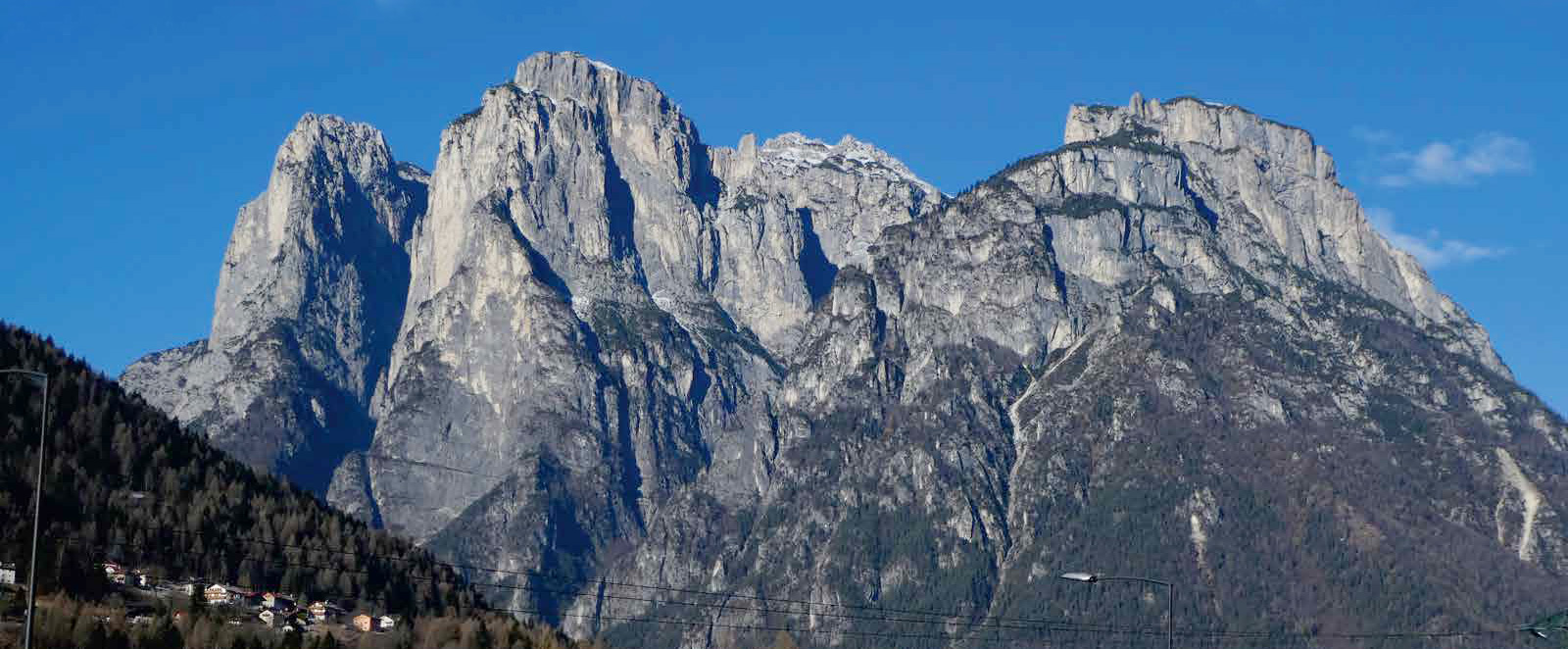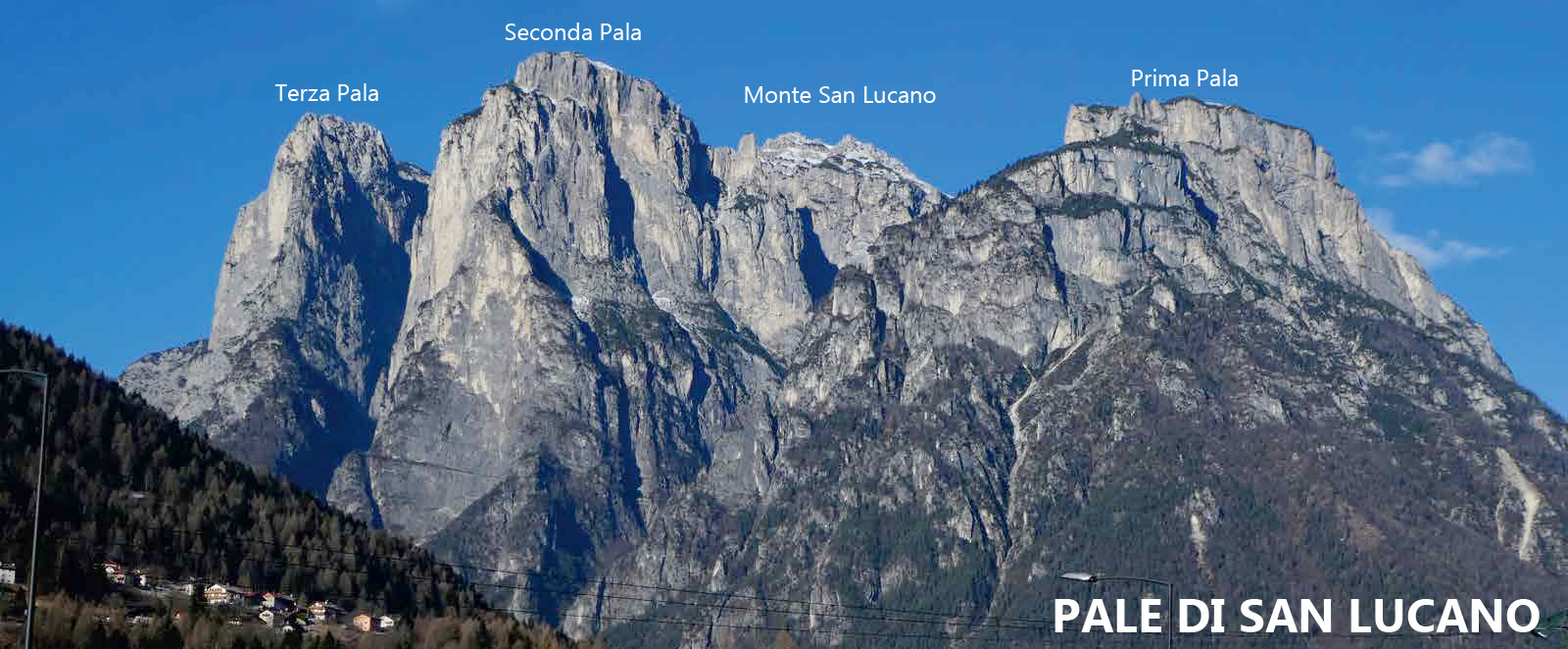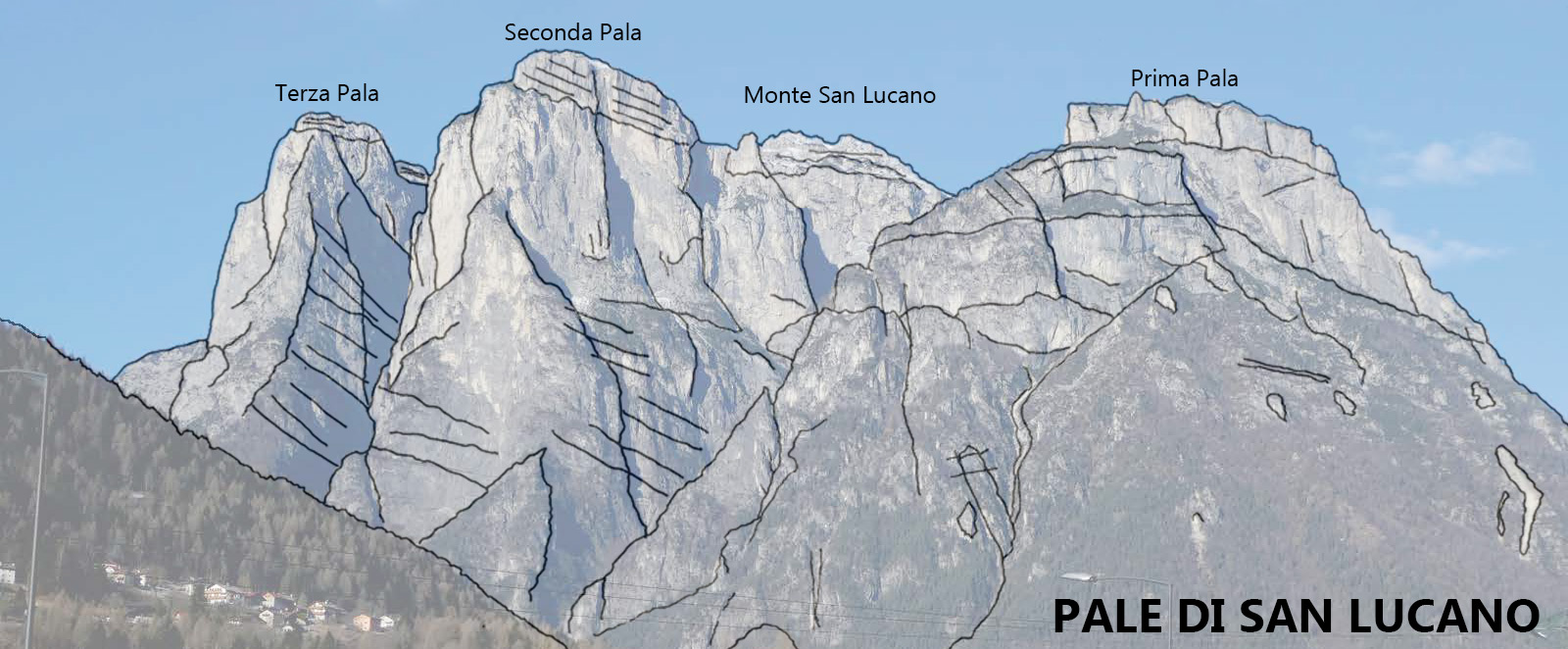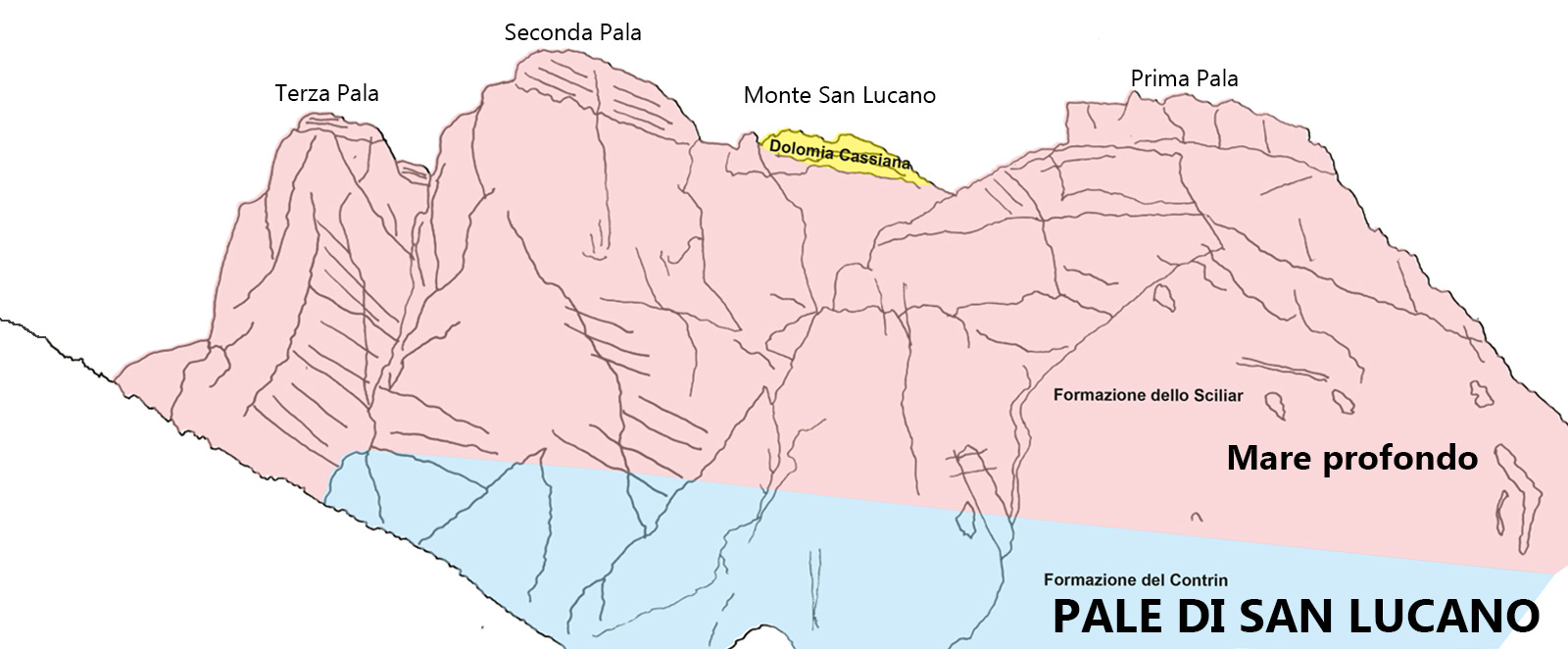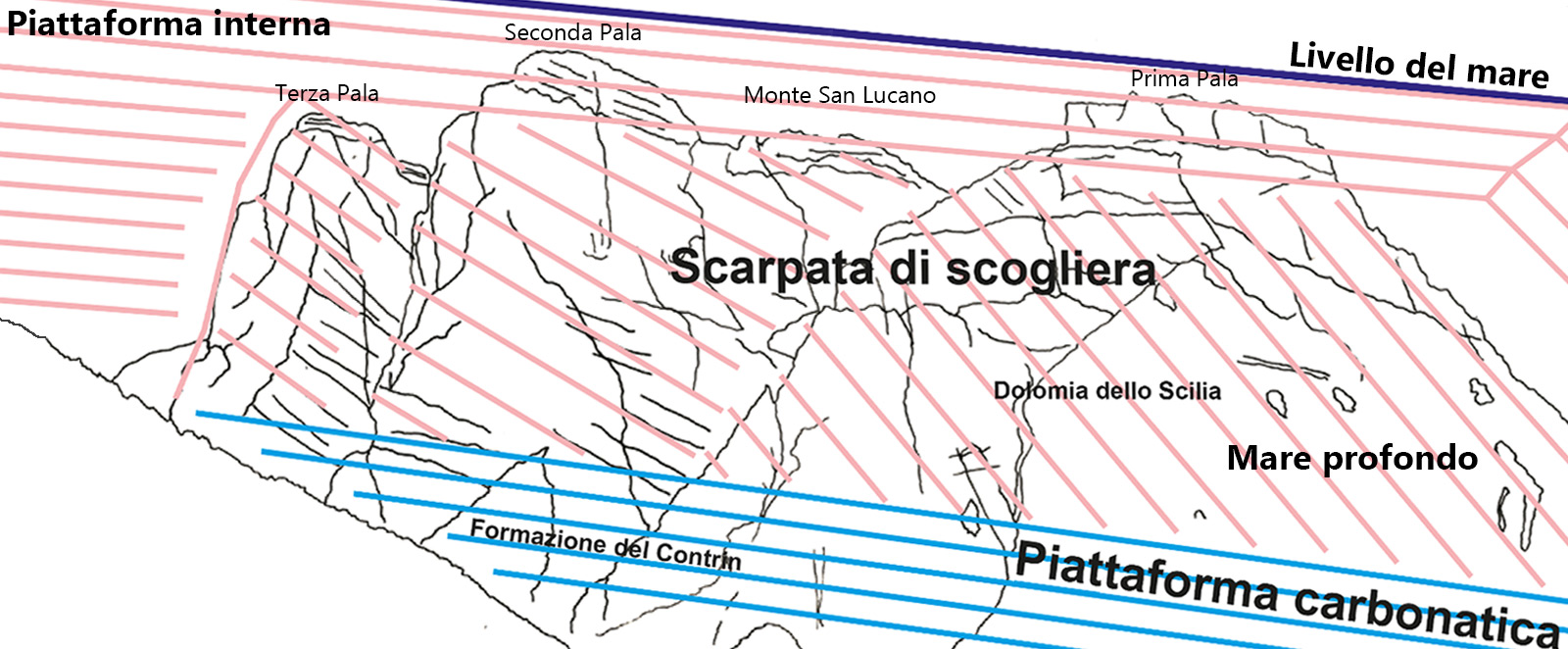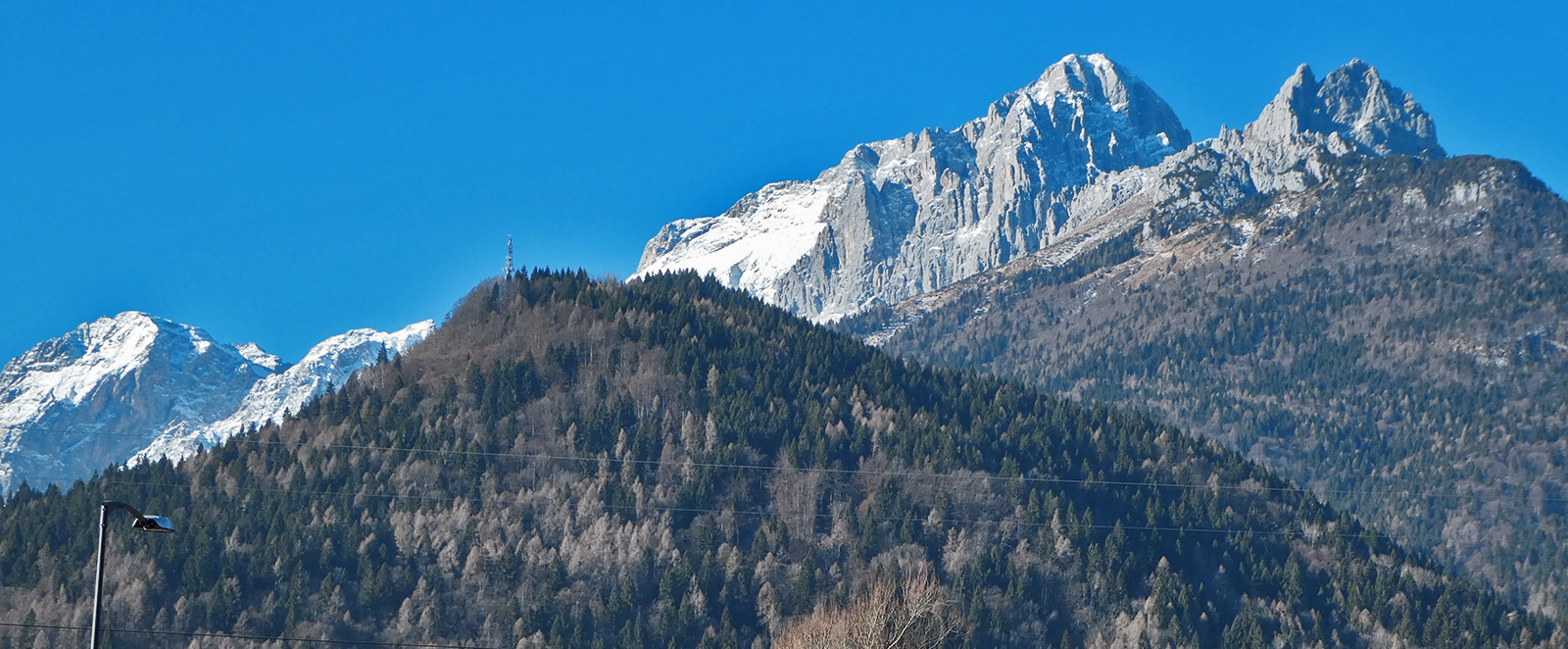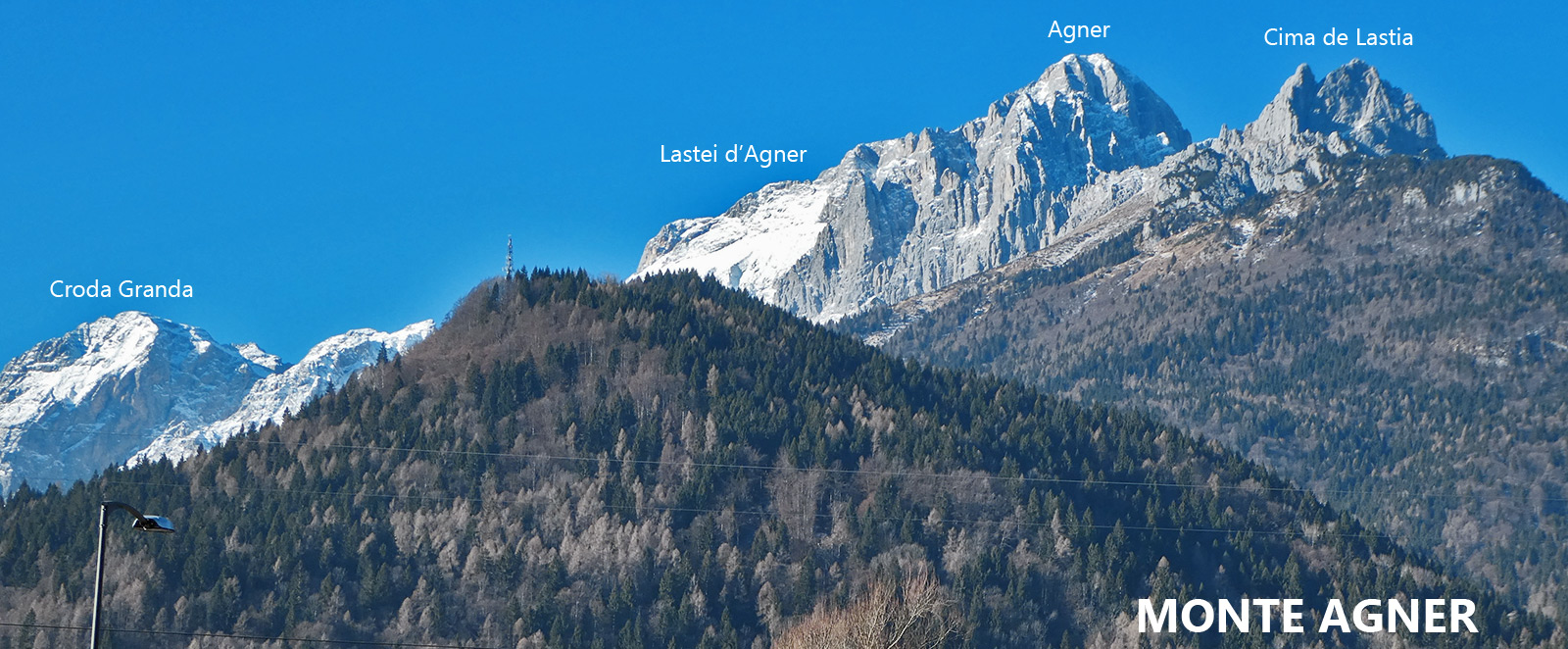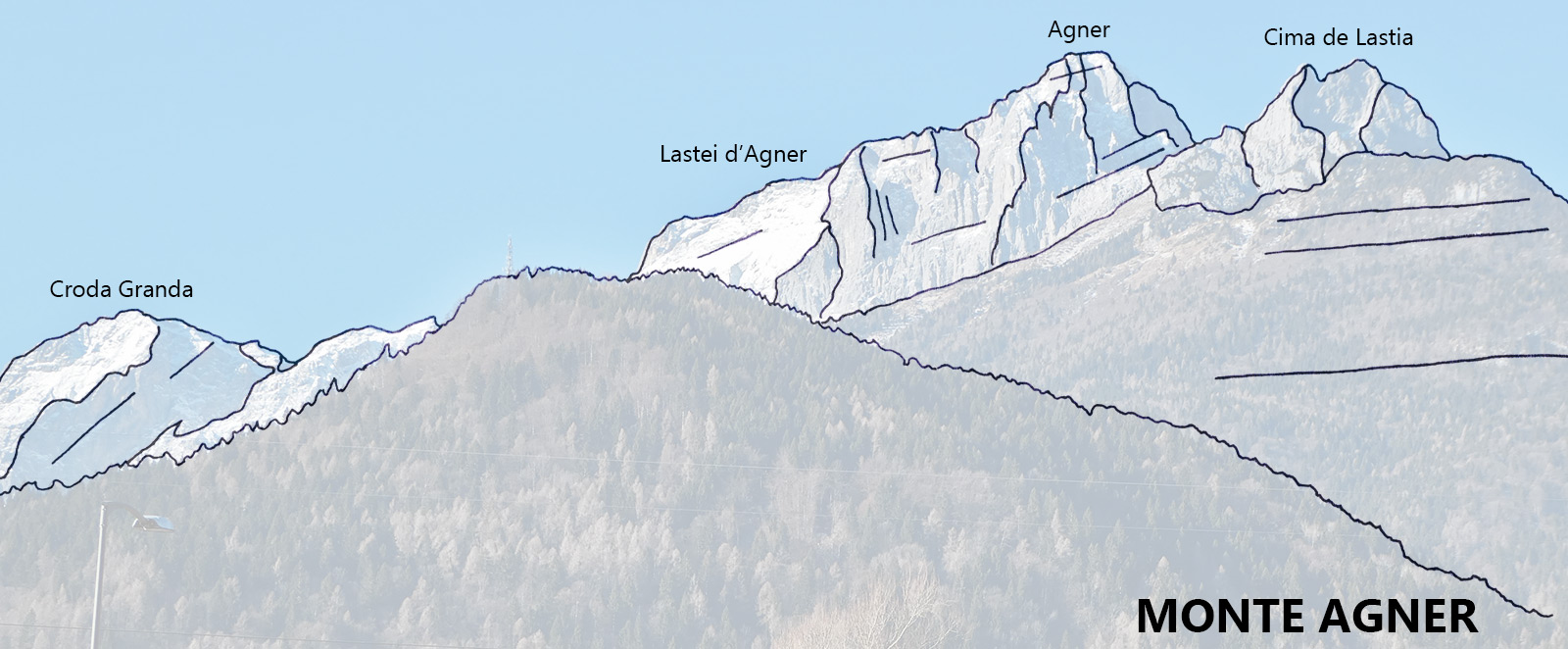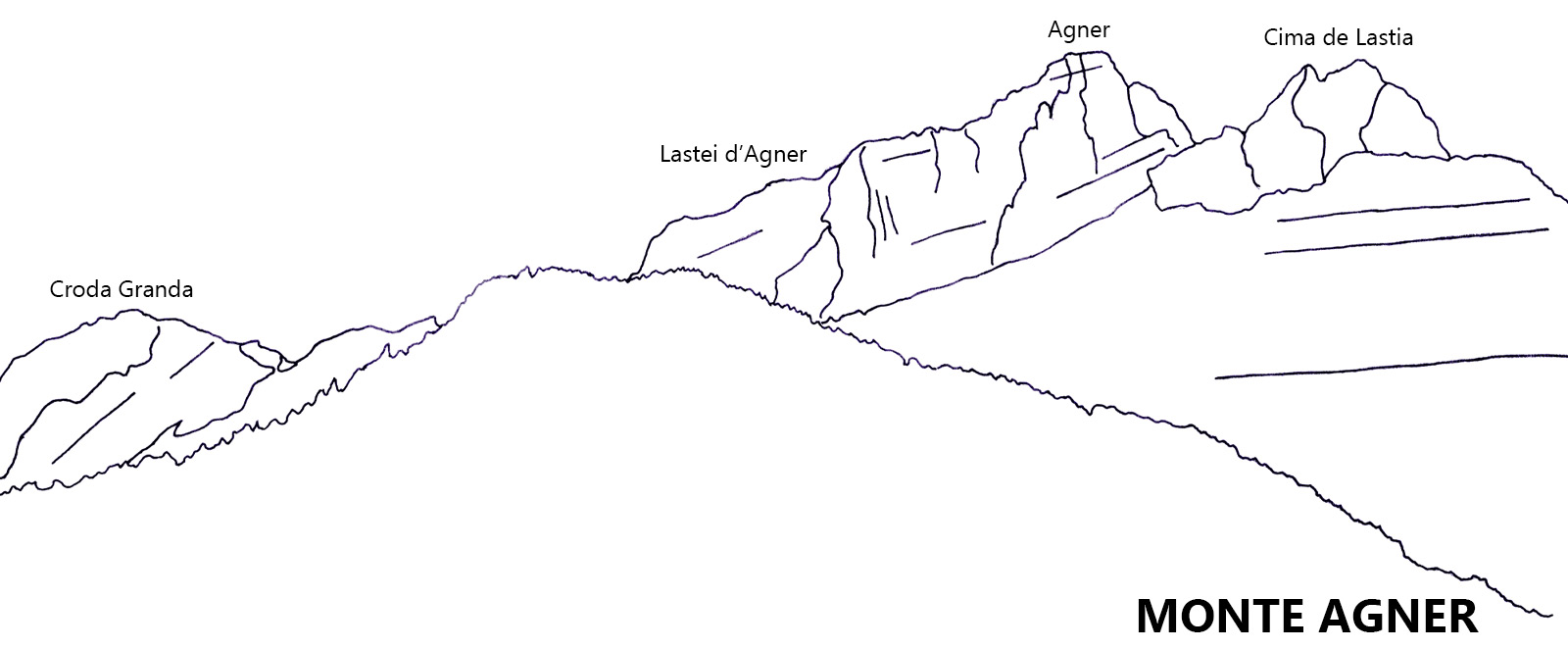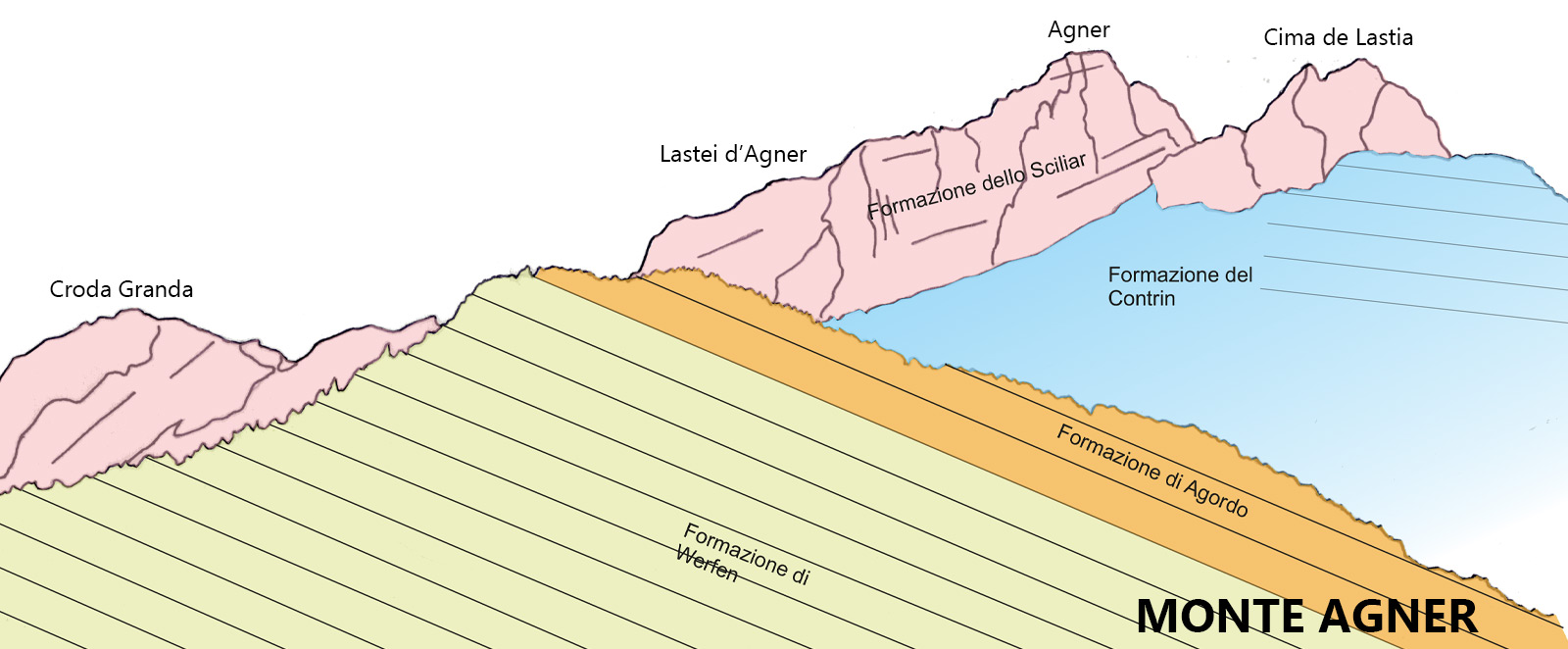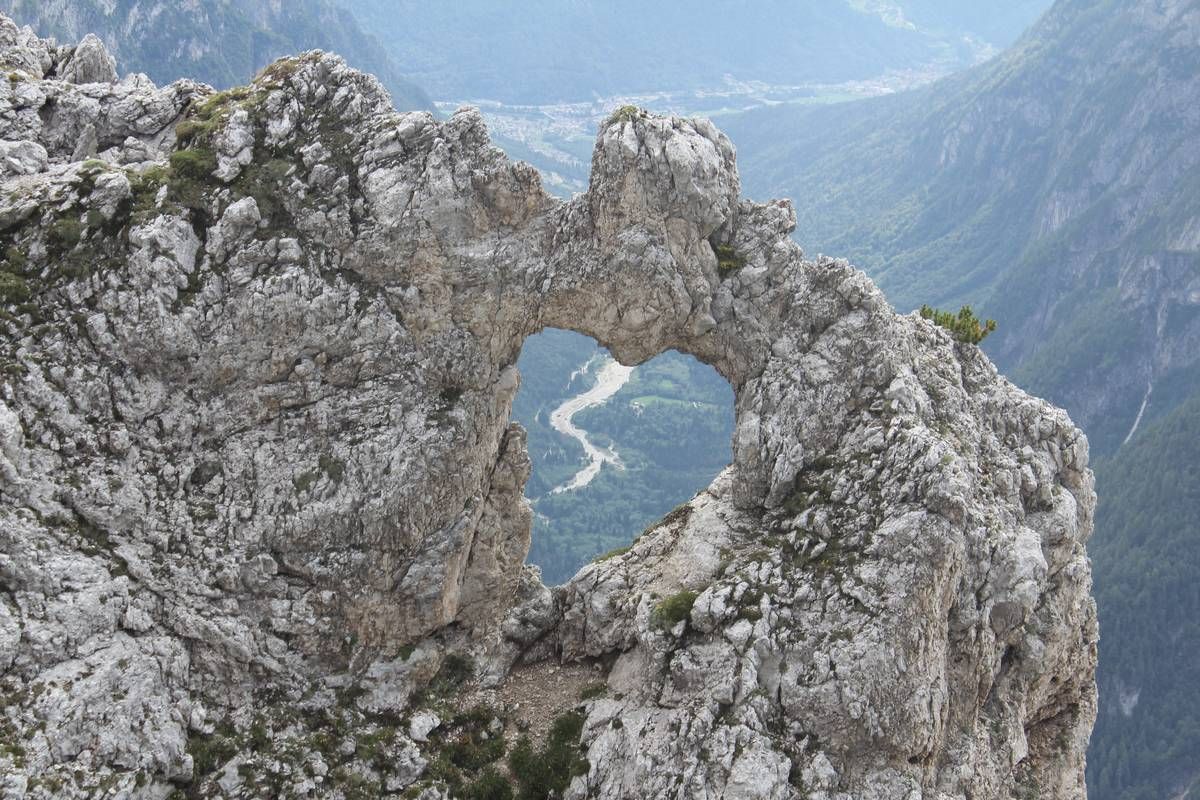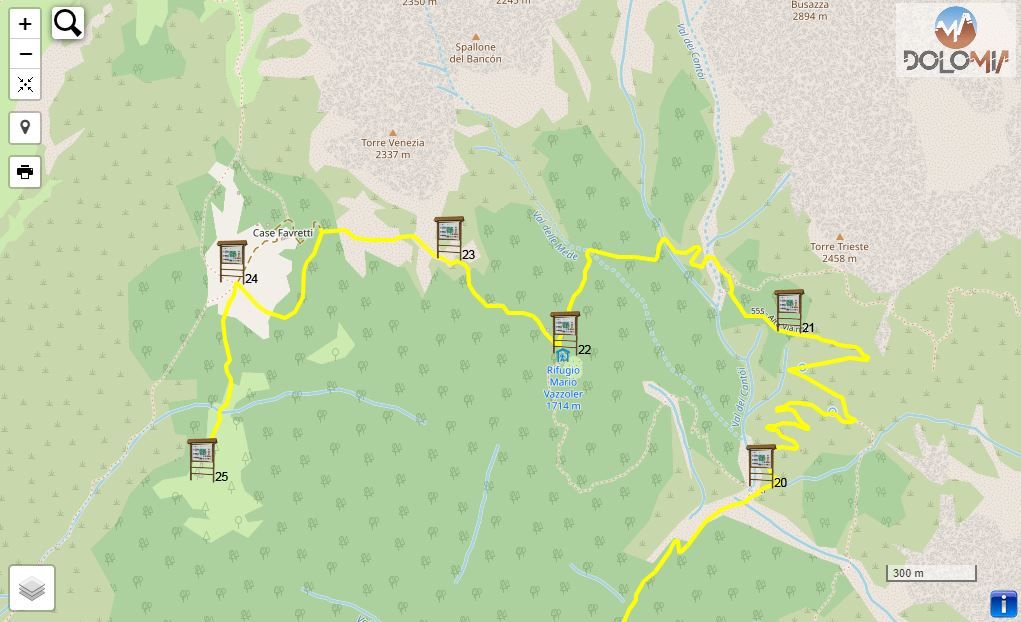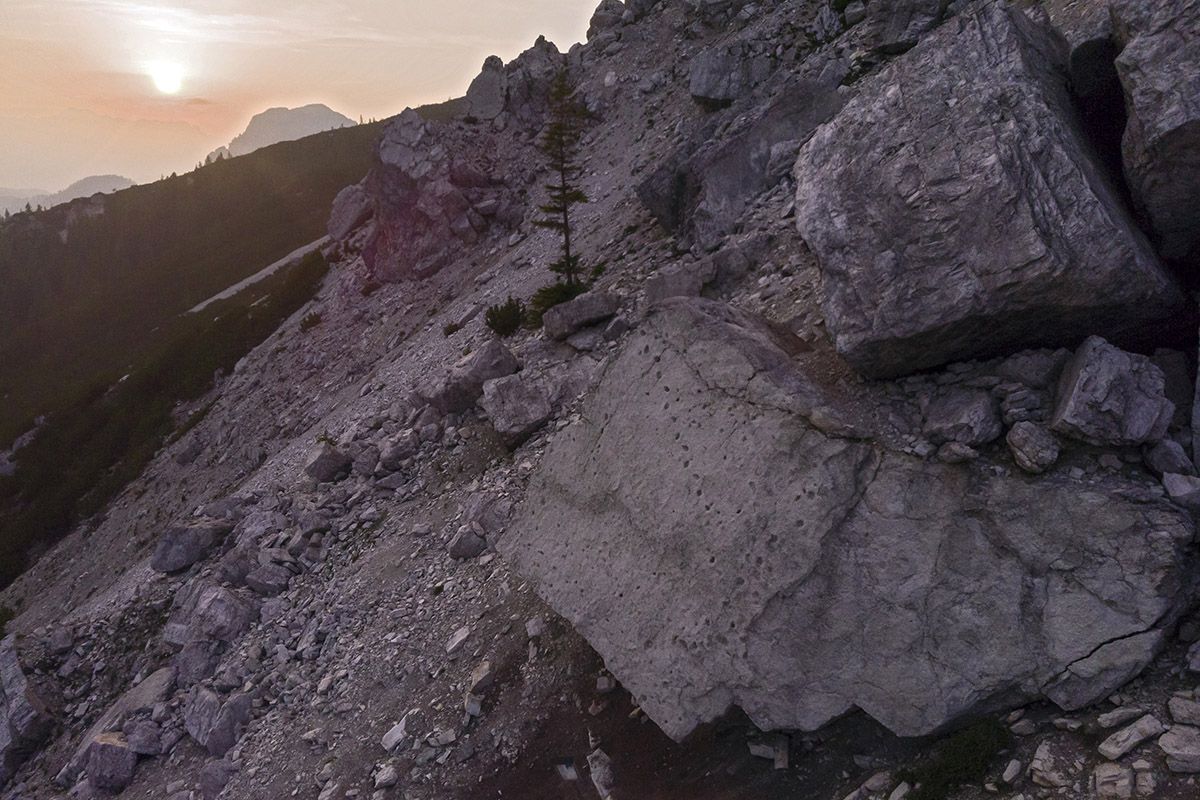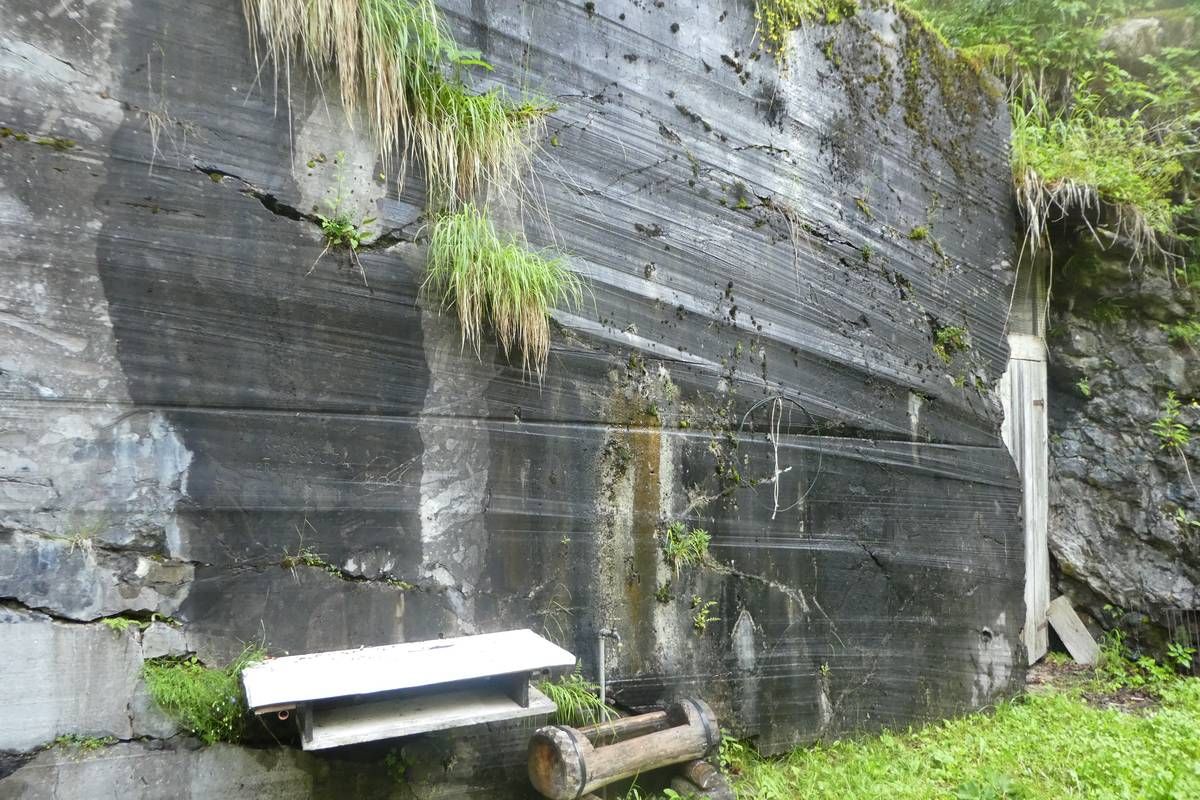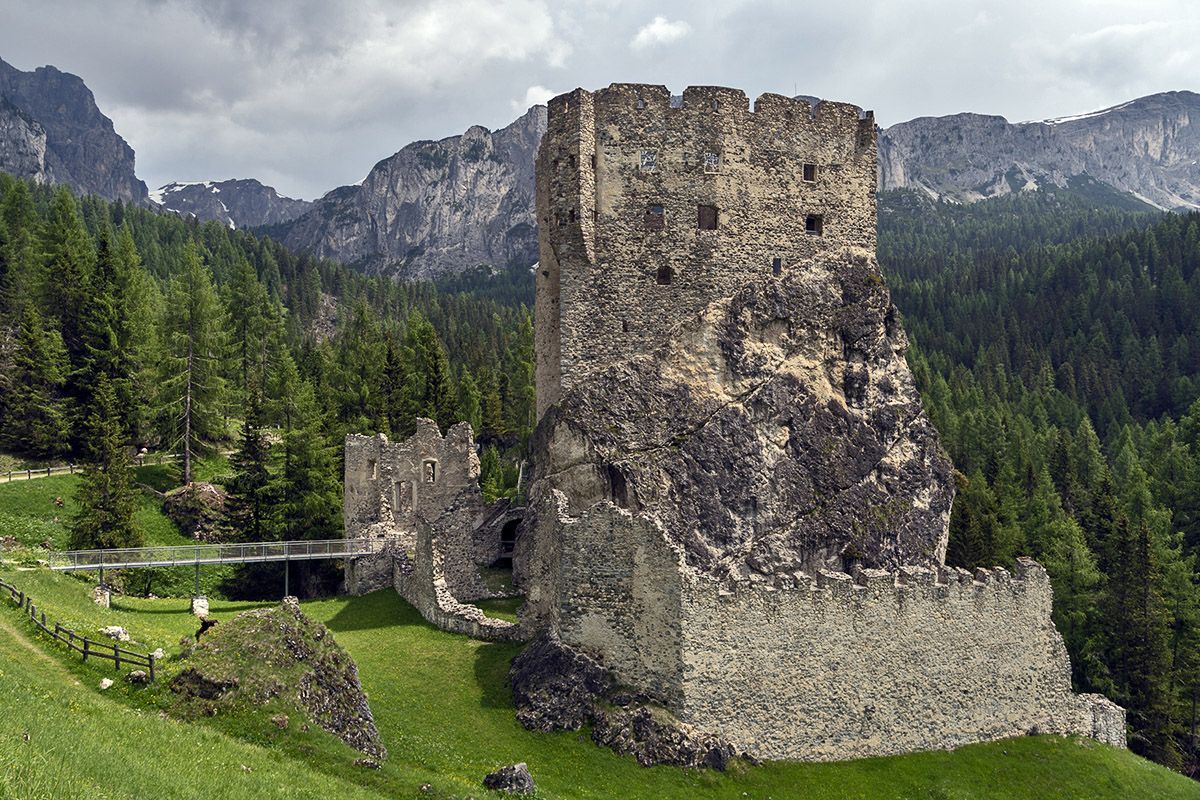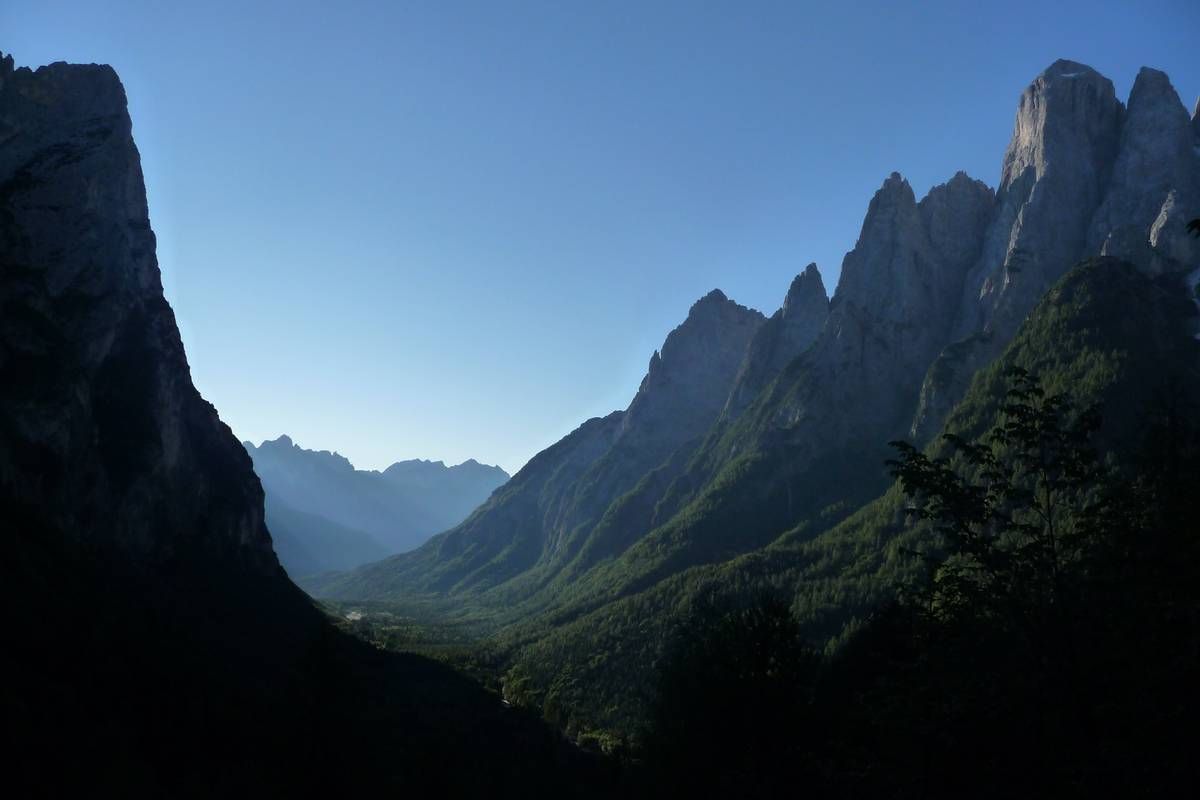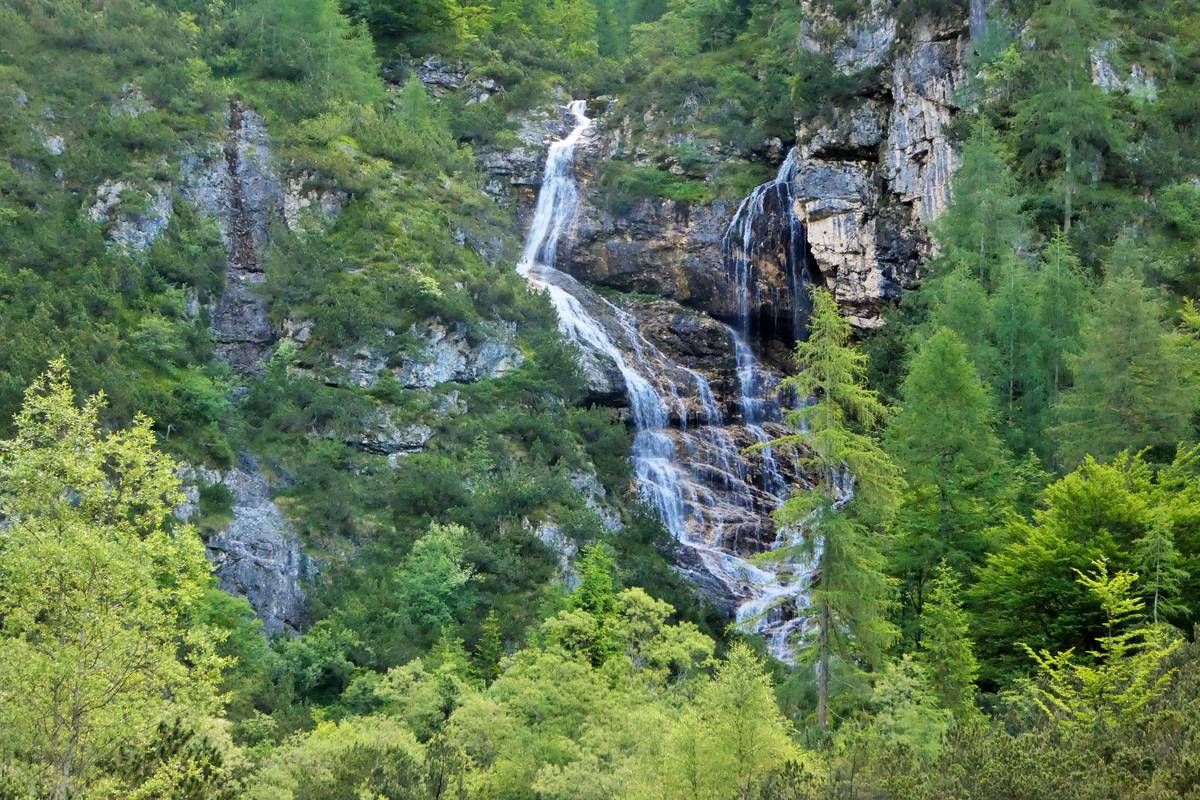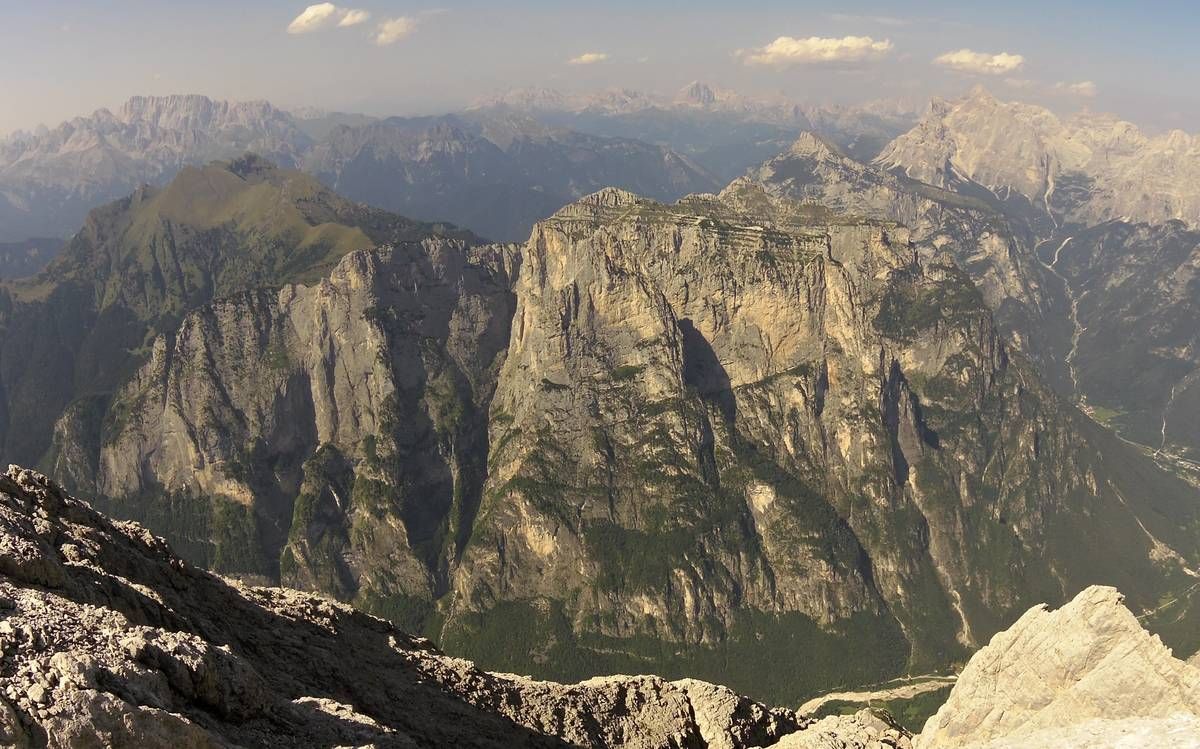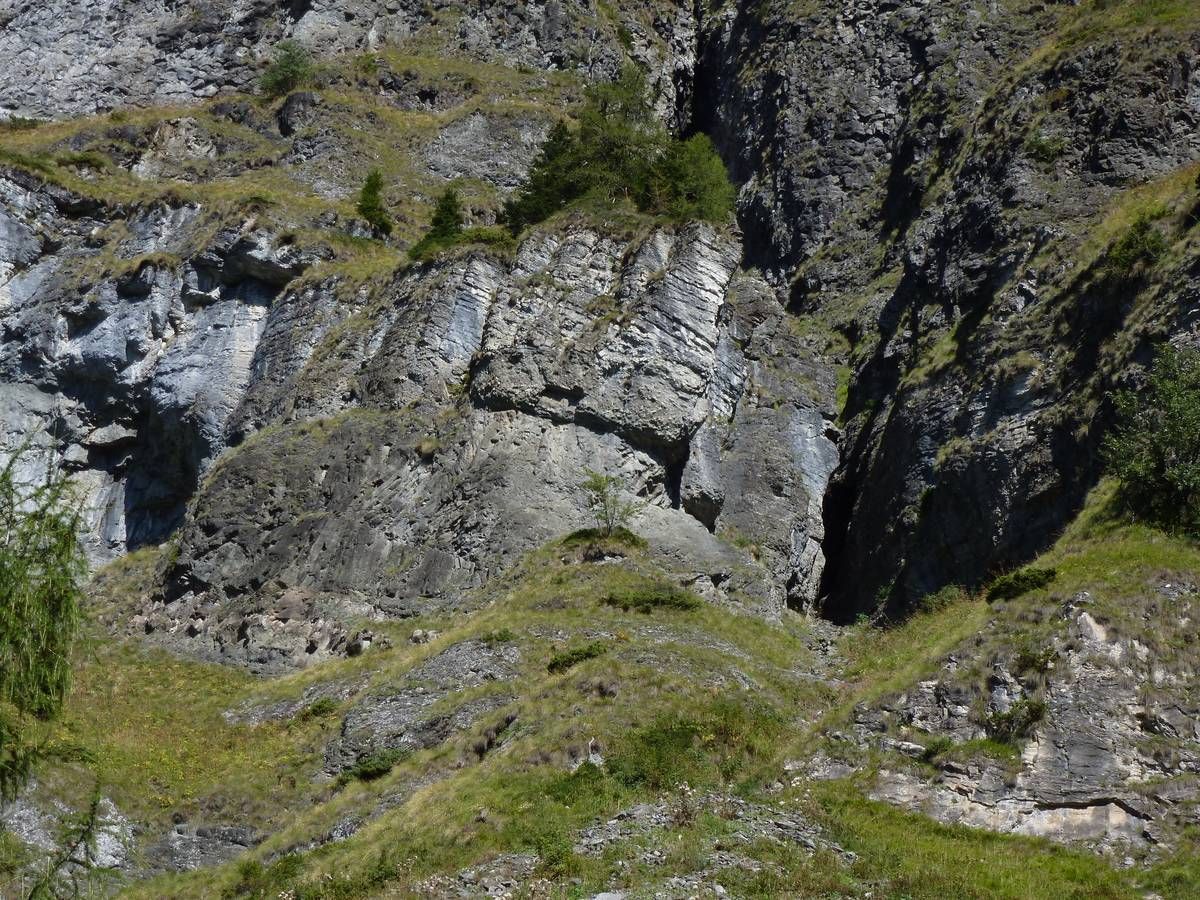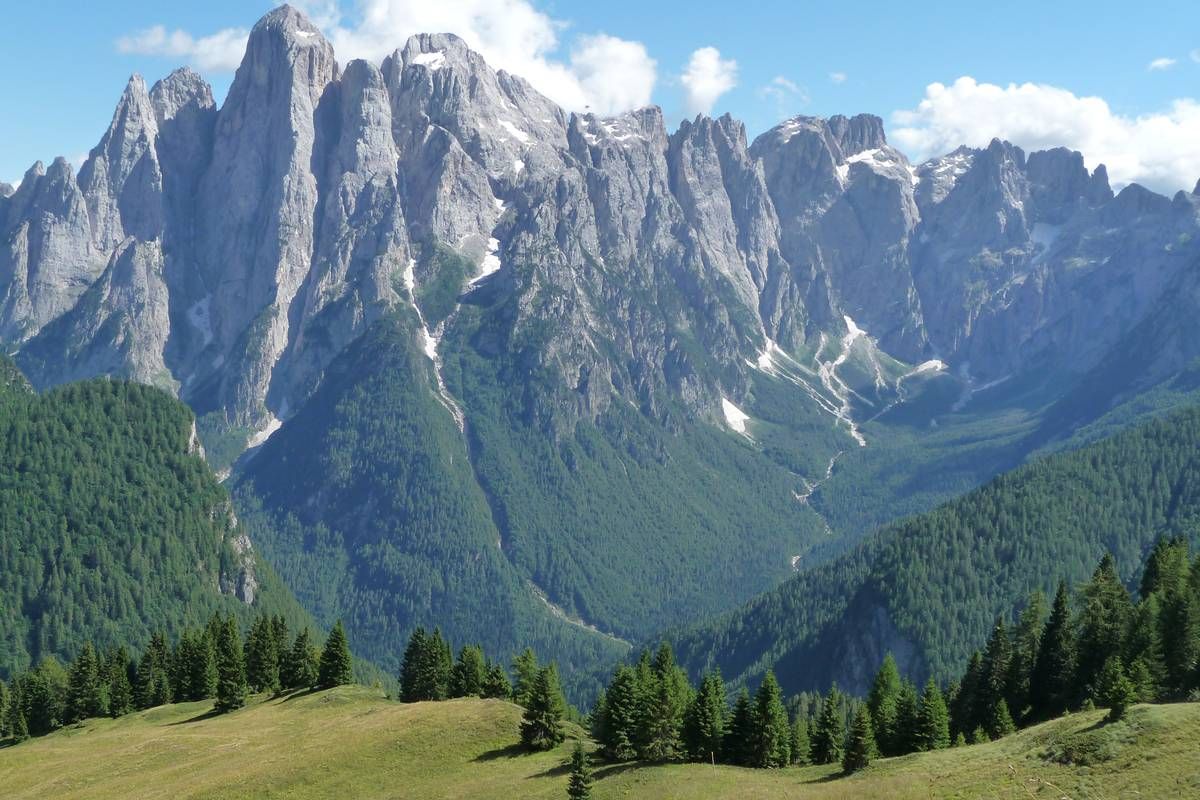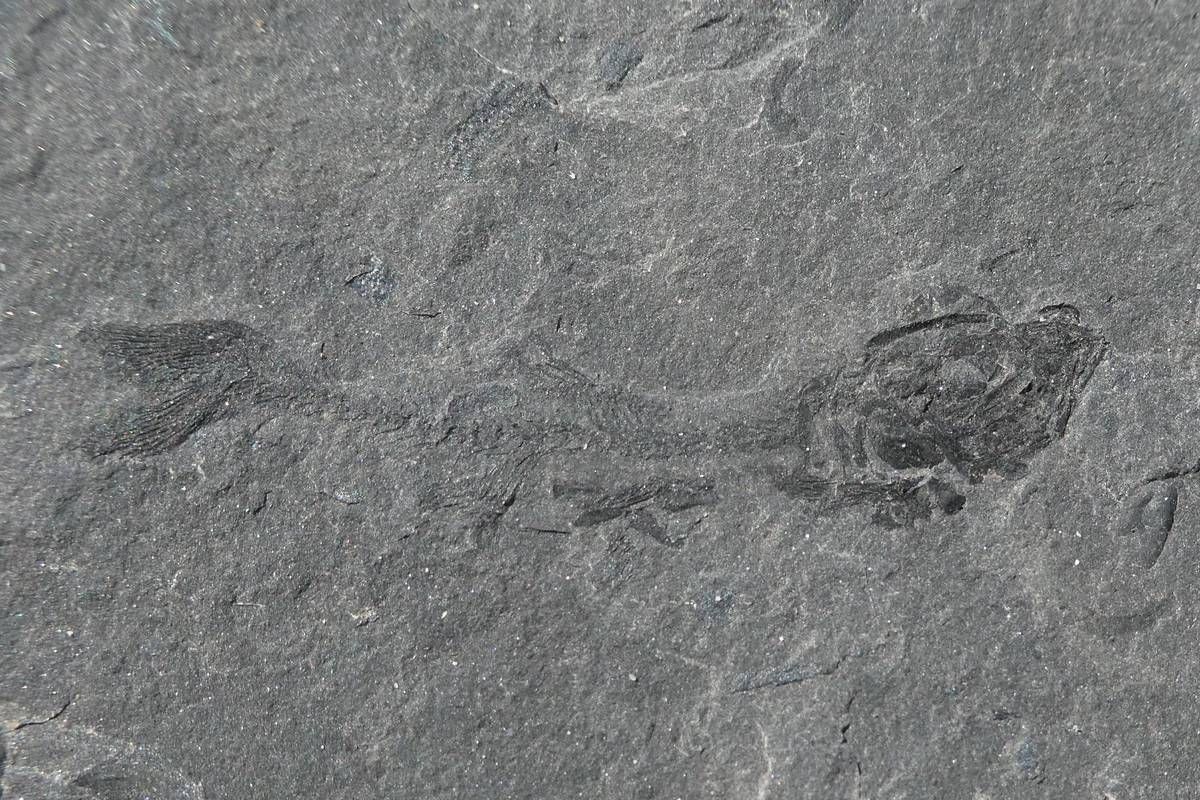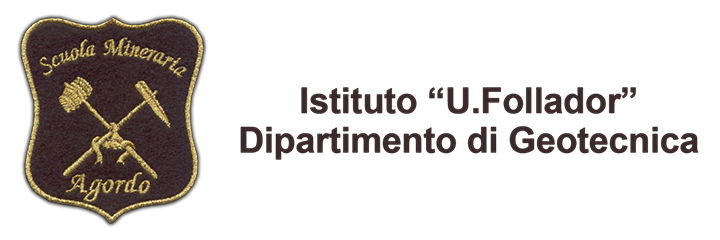If travelling from Listolade (approx. 680 metres above sea level) Panel 18, it is advisable to continue by car to Capanna Trieste (1105 metres above sea level) Panel 19, as the route might become quite challenging because of the difference in height (roughly 1200 meters); in any case, there are no important geological features here.
Once you reach Capanna Trieste (Panel 19) you can park in the large parking lot.
The complete route - a round trip from Capanna Trieste - takes roughly 5 hours.
From Capanna Trieste take the CAI path n. 555 along the private road of the Mussaia, we are on the path of the legendary “Transcivetta”, a mountain running race in pairs that takes place every year, since 1980, in the month of July.
Past a small bridge, the road crests a wooded rocky precipice and crosses a large active debris flow coming from Giaroi del Palanzin. A quaint waterfall is visible on the other side to the north; the bridge will take you to an area abundant in water. You will reach Panel 20 after a 20-minute walk.
As we journey our journey along the Mussaia road and climb further, the panorama becomes wider and wider as you reach Panel 21; from there you can observe the profile of the U-shaped glacial valley of Val Corpassa; the left slope at the foot of Moiazza is covered by an enormous detrital fold which was affected by spectacular debris flows.
Continuing the path we reach Pian delle Taie (about 1600 above sea level); from here one can’t help but notice the entire elaborate skyline of Cantoni di Pelsa. Past the stream coming from Val dei Cantoni, we continue towards the Vazzoler Shelter (1713 m asl, roughly an hour and a half from Capanna Trieste).
CAI path Nr. 560 leaves a woodland area and, from the Vazzoler mountain shelter (Panel 22), arrives at the debris of a landslide consisting of large boulders which were formed as a result of the landslide a collapse that affected the western side of Torre Venezia in 1917. This is where Panel 23 is located.
From panel 23 the journey continues steeply through the dolomite boulders to an altitude of approx. 1800m, in full view of Torre Venezia; leave CAI path Nr. 560 at the hairpin bend leading to Malga Pelsa, past Col del Camp.
The site of Panel 24 is a spectacular panoramic point from the hairpin bend where the road leading to Case Favretti branches off, roughly half an hour away from the Vazzoler Refuge. Continuing for about ten minutes, you reach Malga Pelsa (Casera di Pelsa) (1829 m a.s.l.), where the last panel (Panel 25) of the itinerary is located.





